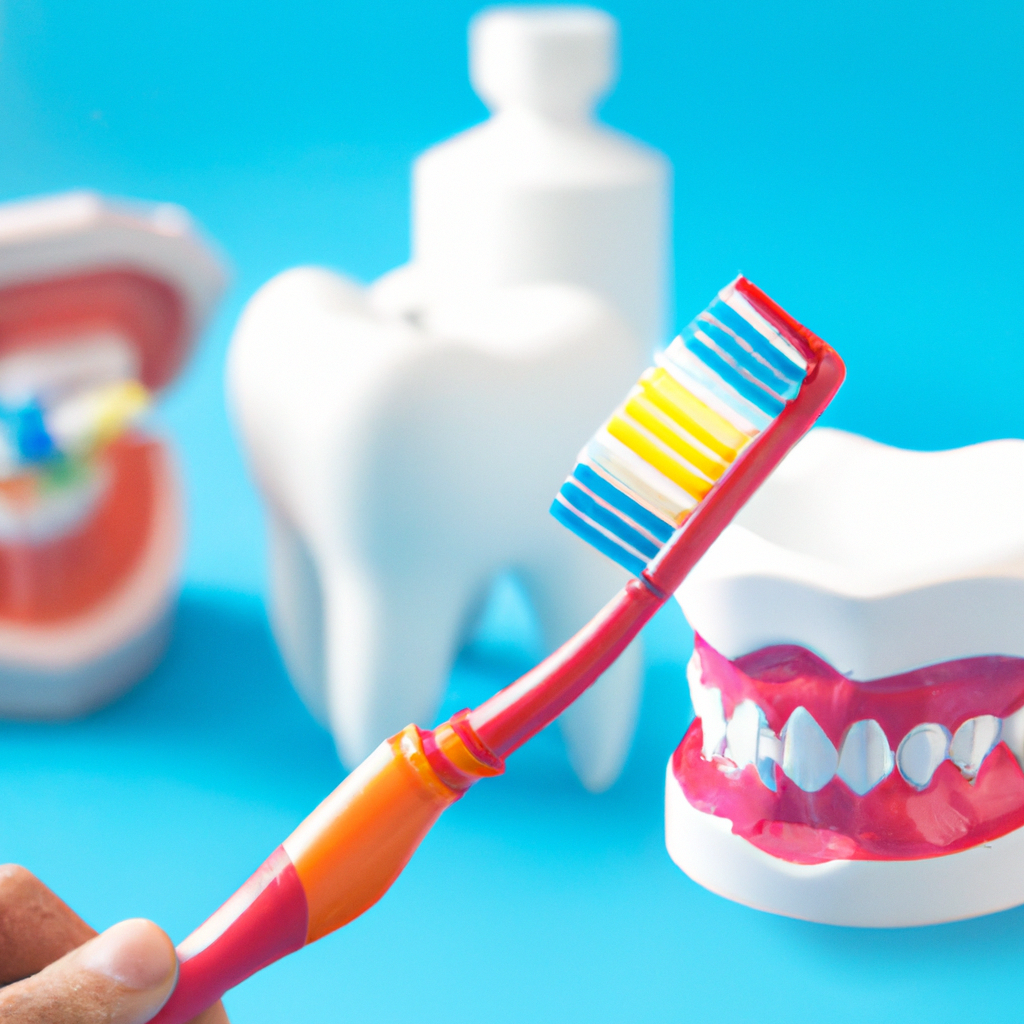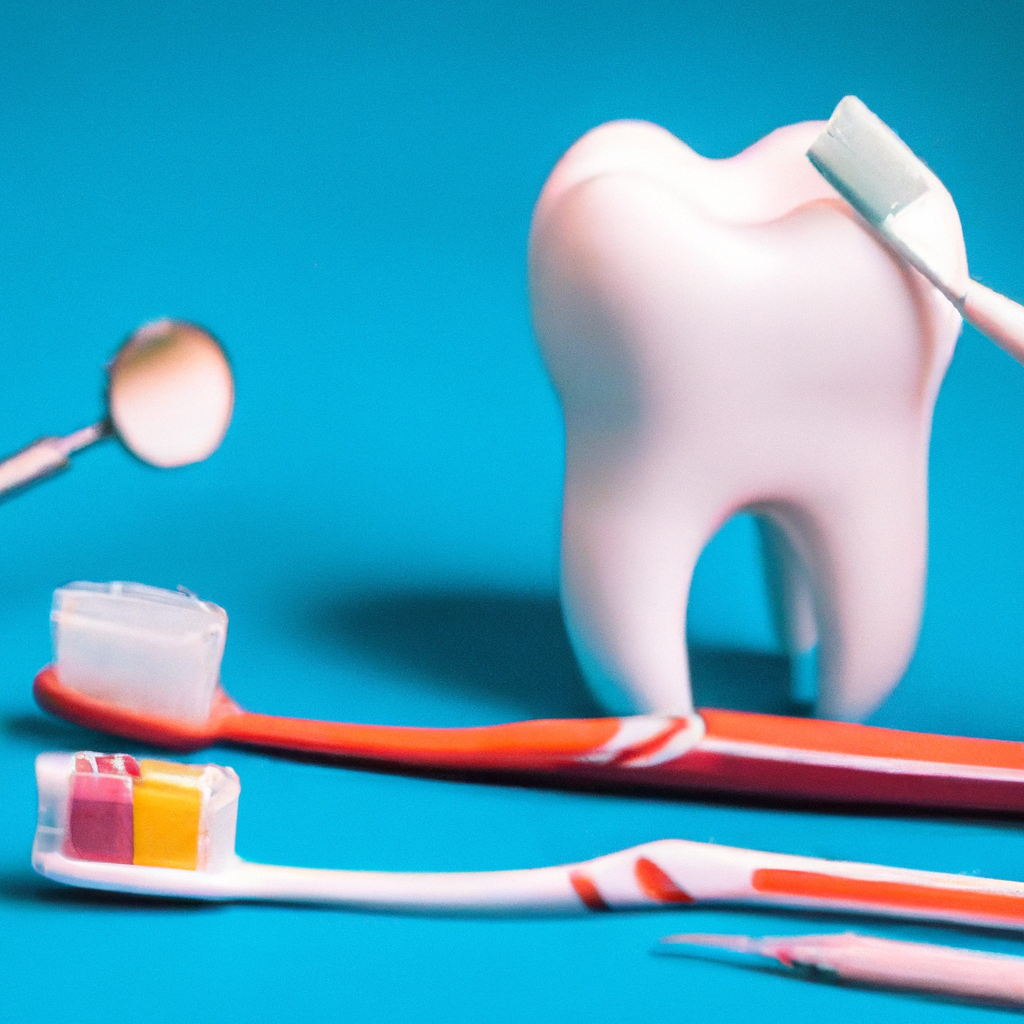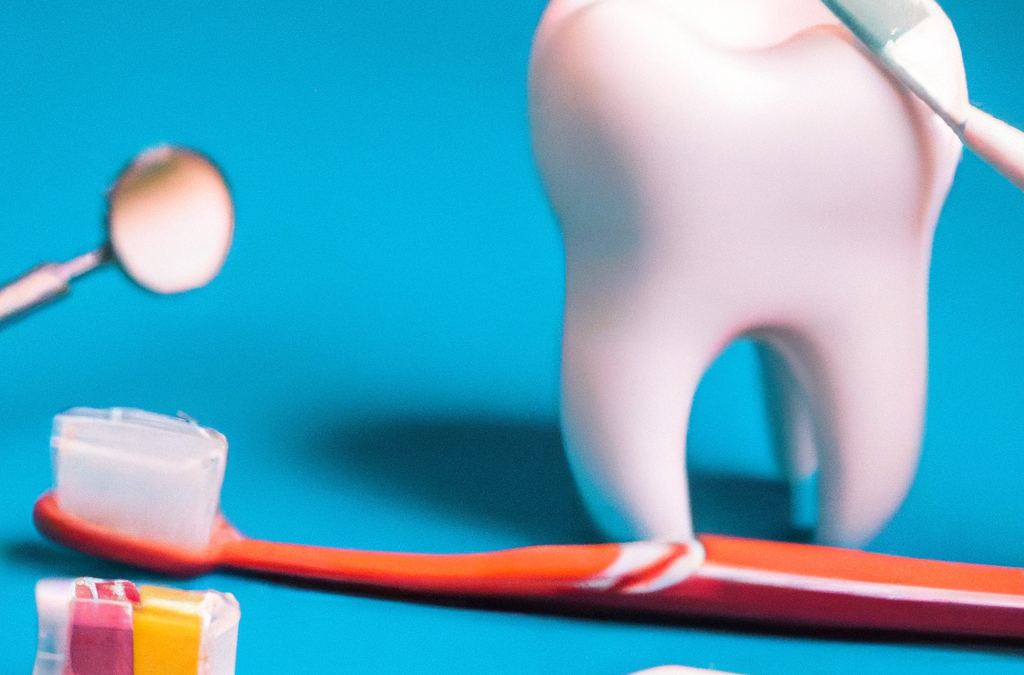Are you a dental professional looking to expand your practice and reach a wider audience? If so, then you’ll definitely want to understand the crucial role of SEO in dental advertising. In today’s digital age, it’s not enough to rely solely on traditional marketing methods. With the increasing number of people searching online for dental services, having a strong online presence is essential. SEO, or search engine optimization, can help improve your website’s visibility on search engine results pages, making it easier for potential patients to find you. In this article, we’ll explore the importance of SEO in dental advertising and how it can positively impact your practice. Plus, we’ll also touch upon the benefits of partnering with a reputable SEO agency like Ortho Advertising based in Philadelphia.
The Role of SEO in Dental Advertising
In today’s digital world, having a strong online presence is crucial for any business, including dental practices. Search Engine Optimization (SEO) plays a vital role in dental advertising, helping dentists and orthodontists increase their visibility, attract more patients, and establish their brand online. By optimizing their websites and online content, dental practices can improve their search engine rankings, drive more organic traffic to their sites, and ultimately achieve greater success in their marketing efforts.

Understanding SEO
Before diving into the benefits of SEO for dental advertising, it’s important to have a solid understanding of what SEO actually is. SEO refers to the process of optimizing a website and its content to rank higher in search engine results pages (SERPs) for relevant keywords and phrases. It involves various techniques and strategies aimed at improving a site’s visibility and attracting organic (non-paid) traffic. By implementing SEO best practices, dental practices can enhance their online presence and make it easier for potential patients to find them when searching for dental services.
Benefits of SEO for Dental Advertising
Optimizing a dental practice’s website for search engines can yield numerous benefits in terms of marketing and business growth. Let’s explore some of the key advantages that SEO provides for dental advertising efforts:
Increased Visibility and Brand Awareness: By achieving higher rankings in search engine results, dental practices can significantly increase their visibility to potential patients. When your website appears on the first page of search results, it gives your practice more credibility and exposure, leading to greater brand awareness.
Higher Website Traffic and Lead Generation: Implementing effective SEO strategies helps drive more organic traffic to a dental practice’s website. By appearing in top search results, dental practices can attract more qualified leads, resulting in a higher chance of converting them into paying patients.
Improved Conversion Rates: SEO focuses on optimizing websites to ensure a positive user experience. By enhancing your website’s design, navigation, and content, you can create a seamless user experience that increases the likelihood of visitors becoming patients.
Cost-Effectiveness: Compared to traditional advertising methods, SEO is a highly cost-effective marketing strategy for dental practices. With SEO, you target users who are actively searching for dental services, making it more likely for them to convert into patients. This targeted approach reduces marketing costs while maximizing returns.
Long-Term Marketing Strategy: SEO is a long-term marketing strategy that provides lasting results. Unlike paid advertising methods, which require ongoing investment, the effects of SEO can continue to benefit dental practices even years after initial optimization. With continuous monitoring and improvement, dental practices can maintain their online presence and stay ahead of the competition.

Keywords and Content Optimization
To achieve success in dental advertising through SEO, it’s essential to focus on keywords and content optimization. Incorporating relevant keywords into your website’s content helps search engines understand the nature of your dental practice and helps it rank higher in search results. Here are some key considerations for keyword research and content optimization in dental advertising:
Importance of Keywords in SEO: Keywords are the foundation of a successful SEO strategy. By targeting the right keywords, dental practices can attract highly relevant traffic to their websites. Performing proper keyword research allows you to identify the specific search terms people use when looking for dental services.
Keyword Research for Dental Advertising: When conducting keyword research, dentists and orthodontists should focus on identifying keywords that are relevant to their services and have high search volume. Keyword research tools can help in finding the most valuable keywords for dental advertising campaigns.
On-page Content Optimization: Optimizing dental website content involves incorporating relevant keywords strategically throughout the site. This includes optimizing meta tags, headings, image alt tags, and incorporating keywords naturally within the website’s text. However, it’s important to note that content should always be informative, engaging, and serve the needs of your audience rather than being overly focused on keywords.
Creating Engaging and Relevant Content: Dental practices can enhance their SEO efforts by creating high-quality, unique, and engaging content. Regularly publishing informative blog posts, articles, and educational resources related to dental health can help attract organic traffic and establish the practice as an authoritative source. It’s important to keep the content fresh, informative, and relevant to your target audience to maximize the benefits of content optimization.
Local SEO for Dental Practices
For dental practices to attract local patients, implementing local SEO strategies is crucial. Local SEO focuses on optimizing a website to appear in local search results, helping dental practices target potential patients in their specific geographic area. Here are some key aspects of local SEO for dental practices:
Importance of Local SEO for Dentists: Local SEO allows dental practices to target patients in their local area, ensuring that their website appears in search results when potential patients search for dental services in their vicinity. This is particularly crucial for brick-and-mortar practices that primarily serve a specific geographic location.
Google My Business Optimization: Creating and optimizing a Google My Business (GMB) profile is a crucial step in local SEO for dental practices. A well-optimized GMB profile improves a practice’s chances of appearing in local search results and provides valuable information like contact details, hours of operation, and patient reviews.
Local Keyword Targeting: Local dental advertising should involve targeting keywords specific to a practice’s location. For example, instead of targeting generic keywords like “dentist,” dental practices can optimize their website for keywords like “dentist in [city name]” or “orthodontist near me.” This improves the chances of appearing in localized search results and attracting local patients.
Citations and Local Directories: Listing a dental practice on relevant local directories and websites can significantly improve its local SEO. These citations provide additional online visibility and credibility, signaling search engines that the practice is legitimate and trusted within the local community.
Location-Specific Landing Pages: Creating location-specific landing pages on a dental practice’s website can help optimize it for local search. These landing pages should include relevant content specific to each location, such as the address, contact information, and services offered at that particular office. This provides search engines with clear signals about the practice’s geographical presence and improves its chances of appearing in local search results.

Website Design and User Experience
The design and user experience of a dental practice’s website play a crucial role in attracting and converting potential patients. A visually appealing, user-friendly website that offers a seamless browsing experience can significantly impact a practice’s online presence and reputation. Here are some key elements to consider for website design and user experience optimization:
Responsive and Mobile-Friendly Design: With the majority of internet users accessing websites through mobile devices, it’s crucial for dental practices to have a responsive and mobile-friendly website design. Responsive design ensures that the website adapts to different screen sizes and provides an optimal viewing experience across devices. This not only improves user experience but also positively impacts search engine rankings, as Google prioritizes mobile-friendly websites in mobile search results.
Fast Loading Speed: In the fast-paced digital world, users expect websites to load quickly. Slow-loading websites not only frustrate users but also negatively impact search engine rankings. Thus, optimizing website loading speed is paramount in dental advertising. Dentists can achieve this by optimizing image sizes, minimizing server response time, and leveraging caching techniques.
Simplified Navigation and Site Structure: A clear and intuitive website navigation structure allows users to find the information they need quickly and easily. Dental practices should focus on maintaining a logical hierarchy of web pages and organizing content into relevant categories. Including a search bar and well-labeled navigation menus can further enhance the user experience.
Clear Call-to-Actions: Dental advertising efforts should include prominent and clear call-to-actions (CTAs) on their websites. CTAs act as prompts for visitors to take the desired action, such as scheduling an appointment, subscribing to a newsletter, or contacting the practice. Strategically placing CTAs throughout the website can enhance user engagement and help drive conversions.
Mobile Optimization
The significance of mobile optimization cannot be overstated in dental advertising. With the increasing use of smartphones, more and more potential patients are searching for dental services on their mobile devices. Optimizing your website for mobile users can have a substantial impact on your practice’s online visibility and patient acquisition. Here are some key considerations for mobile optimization in dental advertising:
The Significance of Mobile Optimization: Mobile devices have become an integral part of people’s lives, and this includes the way they search for and access dental services. Ensuring that your website provides a seamless and user-friendly experience on mobile devices is crucial for attracting mobile users and converting them into patients.
Mobile-Friendly Website Design: Dental practices should prioritize responsive website design to ensure that their website adapts to different screen sizes and resolutions. This means that the website should be easily navigable and readable on mobile devices without requiring users to zoom in or scroll excessively.
Mobile-Specific SEO Strategies: Mobile optimization goes beyond responsive design. Dental practices should also focus on optimizing their website’s load speed on mobile devices, as slower load times can significantly impact user experience and search engine rankings. Utilizing accelerated mobile pages (AMP), optimizing images, and minimizing unnecessary scripts can help improve mobile website performance.

Link Building and Off-page SEO
While on-page optimization is crucial, off-page SEO factors like backlinks and social media engagement also play a significant role in dental advertising. Building high-quality backlinks from authoritative websites and engaging with patients and potential patients on social media can help increase a dental practice’s online visibility and reputation. Here are some key aspects of link building and off-page SEO in dental advertising:
Importance of High-Quality Backlinks: Backlinks are links from other websites that point back to your dental practice’s website. Search engines consider backlinks as votes of confidence, signaling that your website is authoritative and trustworthy. Dental practices should focus on acquiring backlinks from reputable dental associations, industry publications, and local directories.
Guest Blogging and Influencer Outreach: Guest blogging involves writing informative articles for other relevant websites as a guest contributor. This not only helps in building backlinks but also establishes the dental practice as an authority in the industry. Similarly, engaging with influencers and industry leaders in the dental field can help generate more visibility and recognition for the practice.
Local Business Listings and Directories: Listing your dental practice on local business directories and review platforms can significantly boost its online visibility. Google My Business, Yelp, and other directories allow patients to find your practice when searching for dental services. Maintaining accurate and up-to-date information on these platforms is essential for local SEO and patient acquisition.
Social Bookmarking and Content Promotion: Promoting your dental practice’s content on social bookmarking websites like Reddit and StumbleUpon can help drive traffic and improve search engine rankings. Additionally, actively participating and engaging with potential patients on social media platforms like Facebook, Instagram, and Twitter helps build relationships, boost brand awareness, and establish your practice as an authoritative voice in the dental field.
Social Media Integration and Engagement
Integration and engagement with social media platforms are crucial components of dental advertising in the digital age. Social media provides an opportunity for dental practices to connect with patients and potential patients on a more personal level, foster relationships, and share valuable content. Here are some key considerations for social media integration and engagement in dental advertising:
Social Media Platforms for Dental Advertising: Dental practices should focus on developing a strong presence on platforms that are most relevant to their target audience. Facebook is a popular platform for dental advertising, as it allows practices to reach a large audience and engage with patients through posts, comments, and private messages. Instagram is also useful for sharing visually appealing dental images and building a brand identity. Twitter and LinkedIn can be effective for networking with industry professionals and sharing educational content.
Creating and Sharing Engaging Dental Content: Dental practices can leverage social media to share educational and engaging content that highlights their expertise. This can include oral hygiene tips, treatment information, success stories, and patient testimonials. By consistently posting valuable content, practices can foster engagement, build trust, and attract potential patients.
Boosting Online Engagement and Interactions: Engaging with followers and responding to comments and messages promptly is essential for establishing a positive online presence. Encouraging patients to share their experiences and leave reviews on social media platforms can help generate positive word-of-mouth and build trust. Hosting contests, surveys, and Q&A sessions on social media can also promote engagement and increase brand awareness.

Online Reviews and Reputation Management
Online reviews and reputation management are critical components of dental advertising that can greatly impact a dental practice’s success. Positive reviews and a good online reputation not only attract more patients but also strengthen a practice’s credibility and trustworthiness. Here are some key considerations for managing online reviews and reputation:
Importance of Online Reviews: Online reviews are an influential factor in patients’ decision-making process when choosing a dental practice. Positive reviews can significantly boost patient acquisition and trust, while negative reviews can harm a practice’s reputation. Dental practices should actively encourage satisfied patients to leave online reviews and address any negative feedback promptly and professionally.
Managing Online Reputation: Dental practices should actively monitor and manage their online reputation by regularly checking review platforms and social media channels for feedback. Responding to both positive and negative reviews shows patients and potential patients that you value their feedback and are committed to providing excellent service. Addressing negative reviews with empathy and offering solutions can help mitigate any potential damage to the practice’s reputation.
Monitoring and Analytics
Monitoring and analyzing the performance of dental advertising efforts is crucial for evaluating success, identifying areas for improvement, and fine-tuning marketing strategies. Utilizing website analytics tools and tracking key performance indicators (KPIs) helps dental practices make data-driven decisions and optimize their digital marketing efforts. Here are some key aspects of monitoring and analytics in dental advertising:
Tracking SEO Performance: Regularly monitoring key SEO metrics such as website traffic, keyword rankings, and backlink profile helps dental practices assess the effectiveness of their SEO strategies. This allows for adjustments and refinements to ensure optimal outcomes and keep up with evolving search engine algorithms.
Website Analytics and User Behavior: Analyzing website analytics helps dental practices gain insights into user behavior, such as how visitors find and navigate their website. This information can be used to make improvements in website design, content, and user experience, ultimately improving patient acquisition and conversion rates.
Keyword Rankings and Traffic Analysis: Tracking keyword rankings allows dental practices to assess the visibility of their website in search results. By monitoring changes in rankings, practices can identify opportunities to optimize further and outperform competitors. Analyzing website traffic sources and patterns helps in understanding which marketing channels are driving the most traffic and conversions.
Continuous Optimization and Improvement: Dental advertising efforts should be an iterative process, with ongoing monitoring and optimization. By continually analyzing data, identifying trends, and making data-driven decisions, dental practices can refine their marketing strategies, improve ROI, and achieve long-term success in their digital advertising endeavors.
In conclusion, SEO plays a vital role in dental advertising, helping dental practices increase their visibility, drive organic traffic, and establish their brand online. Understanding and implementing effective SEO strategies, such as optimizing keywords and content, focusing on local SEO, ensuring mobile optimization, and engaging with patients through social media, can significantly enhance a dental practice’s online presence and success. By continuously monitoring performance and leveraging analytics, dental practices can continuously improve their marketing efforts, attract more patients, and achieve sustainable growth in the competitive digital landscape.

